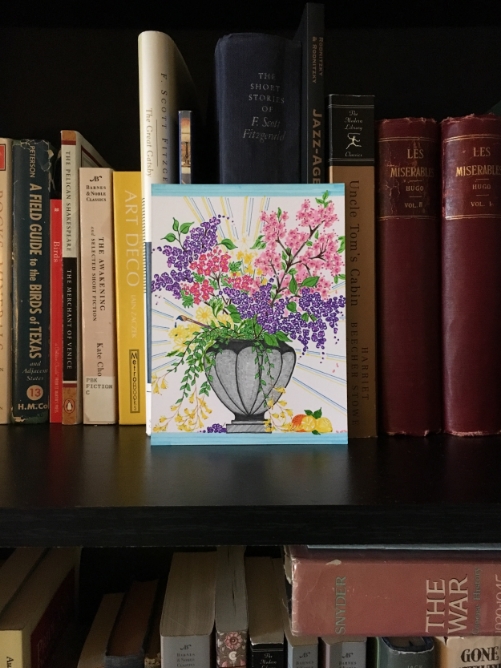A Dash of Blue Paint
This is a continuation of my last post on F. Scott Fitzgerald and The Great Gatsby.
In the following design I wanted to combine Gatsby’s garden flowers with other elements in the novel, some found in the same chapter, and another found at the very end of the book.
In Chapter 5, Nick buys lemons and flowers in preparation for the reunion of Daisy and Gatsby, but Gatsby had already sent a “greenhouse” to adorn Nick’s humble bungalow. Daisy’s highly anticipated arrival is described below.
“Under the dripping bare lilac-trees a large open car was coming up the drive. It stopped. Daisy’s face, tipped sideways beneath a three-cornered lavender hat, looked out at me with a bright ecstatic smile. […] A damp streak of hair lay like a dash of blue paint across her cheek, and her hand was wet with glistening drops as I took it to help her from the car.”
Fitzgerald’s descriptive words—dripping, lavender, damp, blue, wet—come together to evoke a feeling of grey coolness. The swirl of soft, muted tones is broken only by Daisy’s bright smile.
The final few paragraphs of the book are stunningly beautiful. Here, Nick is envisioning New York as it appeared to 17th century explorers: “And as the moon rose higher the inessential houses began to melt away until gradually I became aware of the old island here that flowered once for Dutch sailors’ eyes—a fresh, green breast of the new world.”
The fruit, various flowers, and blue paint, coupled with the mention of the Dutch, made me think of grouping all together in a classic still life style. So, you will find a plum branch, a sprig of hawthorn, sparkling yellow jonquils, vines of kiss-me-at-the-gate, bunches of purple lilacs, citrus, and finally, some blue paint dripping on a daisy.
Below is an example of a Dutch still life.
Jan van Huysum, Still Life with Flowers and Fruit (c. 1721)

